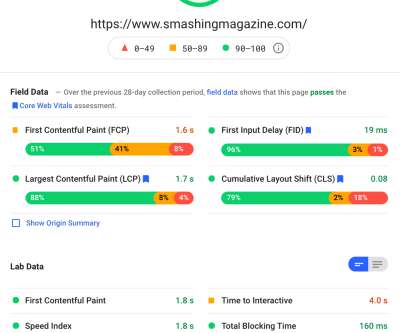An In-Depth Guide To Measuring Core Web Vitals
Smashing Magazine
APRIL 19, 2021
Google uses anonymized data from Chrome users to feedback metrics and makes these available in the Chrome User Experience Report (CrUX). CrUX data is available in a number of tools, including in Google Search Console for your site. CrUX is also available as a free API to get more precise figures for those percentages.











Let's personalize your content